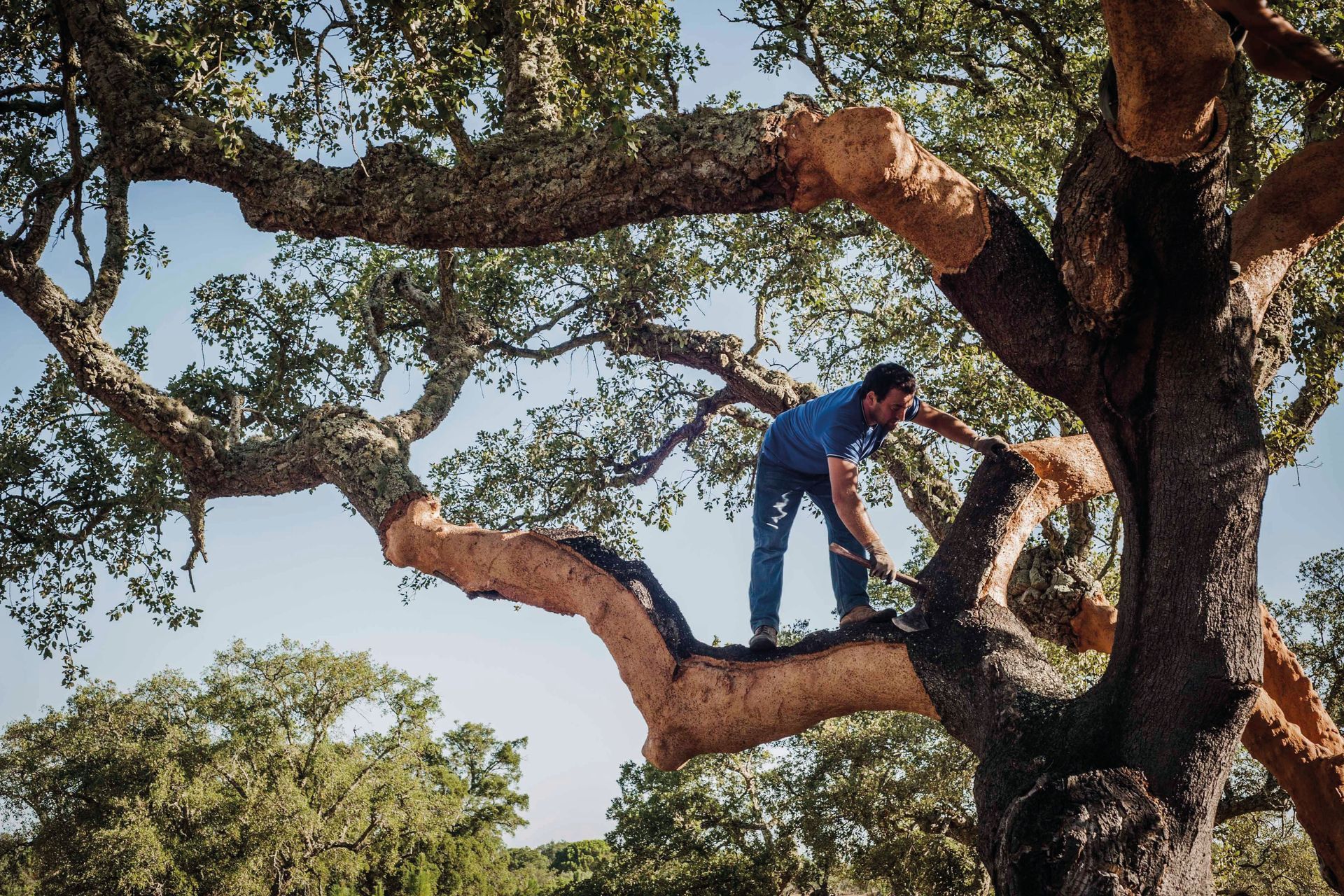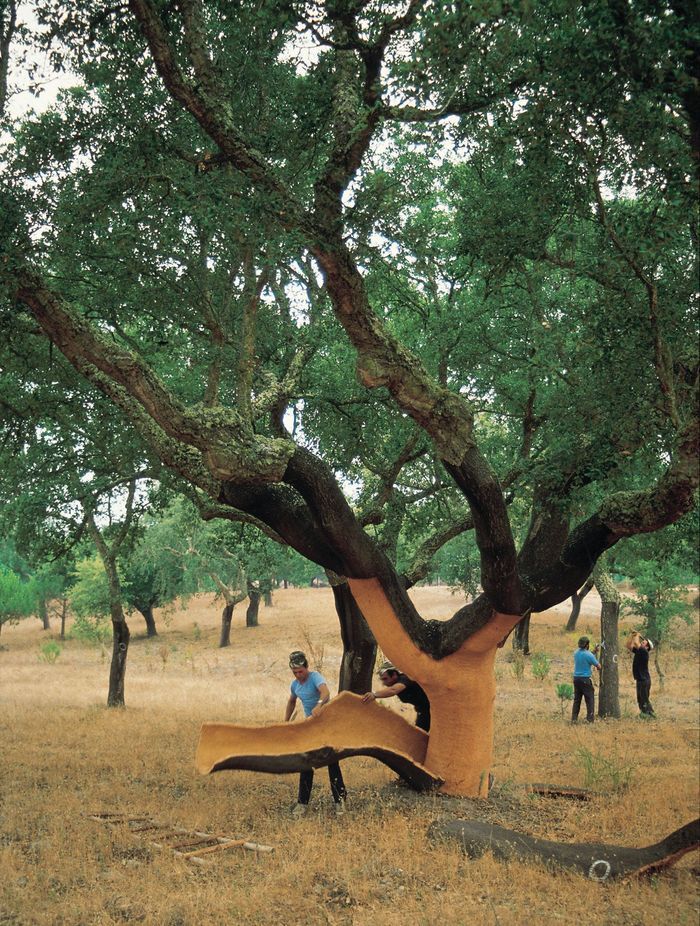For the love of cork
Written by
22 June 2019
•
9 min read

Cork is arguably one of the most underused products in the New Zealand building industry. A completely natural and renewable product, it is sourced from the bark of the cork oak tree and can be used for everything from insulation to flooring. We had a chat to Quantum Group and architects Ewan Brown, Nick Dalton and Stephen Rendell about its potential as a widespread building material.
As a completely renewable and natural product, cork has a plethora of benefits and is used for everything from the soles of our shoes to insulation in buildings. However, that is not the case in New Zealand as frequently as it is overseas. So why are we missing the opportunity with this natural, sustainable and renewable building product? For Quantum Group, cork is a core focus simply because it has so much potential as a sustainable building product. Last month, Quantum Group sent three architects to the heart of the world’s cork production, Portugal.
Here, in the Mediteranean nation, soils are sandy and chalk-free with low nitrogen and phosphorus and high potassium - the prime growing conditions for the cork oak tree. And nothing is more clear than the vastness of Portugal’s cork forests. They span around 730,000 hectares and have acted as a means of survival for the people who live in their vicinity for centuries.
In the wider West Mediterranean basin, covering Spain, Morocco and Algeria, cork oak forests occupy an area estimated at over 5.4 million acres. These forests have been ranked as one of the 35 most important ecosystems in the world for preserving biodiversity - on par with the Amazon, the African Savanna and Borneo. According to Amorim Cork Composites, the company that manages Portugal’s cork production, these forests are the natural habitat for 135 plant species and more than 200 animal species. They are home to more than 60 per cent of the country’s mammals along with 24 species of reptiles and amphibians. Among them is the Iberian lynx - the world’s most threatened feline species.
While not much has changed over the decades in terms of the harvesting of cork - it is still harvested with a simple axe at nine-year intervals - what has changed is our knowledge of the product and how it can be used. In Portugal’s cork forests alone, there is enough cork to service the world’s entire cork needs for the next 100 years at least. Currently, Portugal’s cork production accounts for 55 per cent of global cork production annually.
So it was in this context that architects Ewan Brown and Nick Dalton, along with Stephen Rendell, landed in Portugal in early May. They were there to further understand the possibilities of cork for the New Zealand construction industry and how this underutilised resource had the capacity to change the very sentiment of what it means to design and build sustainably.
“What surprised me most about cork was how sustainable it is,” architect Ewan Brown said. “I knew a certain amount but it was enlightening to find out how much carbon it sequestered and how efficient the growth, collection and manufacturing of the product were.”
Nick Dalton had a similar reaction. “I was blown away by the environmental performance of the product. The Portugese are certainly global leaders in not only how sustainable cork is but how they use all parts of the product in their processes so there is no waste product,” Nick said. “Even the cork dust that is created is reused as biofuel. They harvest every nine years with no harm to the protected cork tree … it’s a bit of an inspiration for how we might act in a Kaitiaki way here in Aotearoa.
“The Kaitiakitanga of this material is an inspiration. In Aotearoa, we grow pine plantations, then strip the land bare every 30 years. The Portugese protect their cork trees, and harvest every nine years with no damage to the trees, creating huge benefits not only from an environmental perspective but an economic one also.”
What is the importance of retaining cork oak forests?
The world’s cork oak forests are much more than a home to plant and animal species - the communities around them rely on their existence, just as they have for centuries. And, it is estimated that cork forests retain up to 14 million tonnes of carbon dioxide annually. In Portugal alone, it is estimated that the cork oak forests retain around five million tonnes per year. A stripped cork oak tree absorbs five times more carbon dioxide during the nine-year regeneration process than an unstripped cork oak tree.
The cork oak tree has an average lifespan of more than 200 years. It is an evergreen tree, and part of the same family as the chestnut and oak tree, Quercus suber.
How is cork harvested?
The stripping of cork is an ancient process in which the bark of the cork oak is removed with an axe. This work is one of the highest paid agricultural jobs in the world today due to the specialised knowledge required to strip the bark without damaging the tree. In Portugal, the stripping of cork takes place between May and August each year, when the trees are growing at their fastest. No trees are felled during harvesting of cork, and they are not damaged in any way if the cork is harvested correctly.
Cork oak trees cannot be stripped frequently. In fact, a cork oak tree must reach the age of 25 with a trunk diameter of 70 centimetres before it can be stripped for the first time. Thereafter, the bark can only be harvested every nine years to preserve the tree. Each tree can be harvested in this manner for around 150 years in total. The first stripping, from which virgin cork is obtained, is difficult to process. The second has a more regular structure and becomes easier to process. From the third stripping on, 21 years into the harvesting of the tree - or when it is around 46 years old - the cork has the ideal structure to process.
What are the benefits of cork as a building material?
Thanks to the thermal and weak combustion properties of cork, cork oaks are more fire-resistant than other trees. The slow combustion of cork makes it a natural fire retardant as a building material, forming a barrier against fires. Its combustion does not release smoke or toxic gases.
“For my practice I see cork being a great product to use in the future battle to create carbon neutral buildings. Prior to the Portugal trip, I was at a living building challenge conference. The big challenge I took from that is to drive our current living building project towards carbon neutrality, and cork is definitely a part of that journey. This learning came at exactly the right time as we are just getting beyond primary structure and cork fits into the equation really well,” Ewan said.
In terms of the other benefits of cork as a building material, there are many. “For me, it is the warmth and comfort of the product in the first case, but beyond that it has a series of strong attributes from impact resistance to acoustic insulation, thermal insulation, and of course carbon sequestration.”
Nick’s firm, TOA Architects, is also considering cork as a potential material in upcoming projects for the same reasons. “The environmental performance of this product is second to none,” Nick said. “Its acoustic properties are huge as is its resilience as a product. TOA is actively looking through projects to see which are appropriate for cork to be specified in. It was great to see it used in Portugal in all the different applications. Seeing it used as an exterior cladding was very interesting.”
For Stephen Rendell of Cheshire Architects, the trip has allowed him to realise the vast possibilities for cork as a construction material, particularly due to the lightness of its weight. “Prior to the trip I spotted an opportunity to use cork as a natural and honest wall lining material that provides a certain kind of luxury in the guest area of a boutique winery we are working on. Since returning from Portugal, other opportunities are presenting themselves,” Stephen said.
“During the trip, we were taken to a bar and restaurant in Porto called MUDA which had dark brown cork lining the walls and ceiling of the rooms. The acoustic qualities were immediately impressive and I found that despite it being busy we sat and very quickly detuned into relaxed comfort. It was stunningly beautiful too.”
What can cork be used for in construction?
One of Quantum Group’s core cork offerings at the moment is flooring. As a contemporary flooring material, it is very different to what may come to mind. “Often, people think of the old, ugly cork floors of the 1970s,” Quantum Group’s Larry Harrison said. “But the modern material couldn’t be more different in terms of aesthetic value. Hydrocork, for example, is a versatile wood-look flooring that is soft, warm and has high acoustic and thermal insulation properties. It’s a beautiful, high performing natural flooring product.”
However, flooring is just one application of cork. It’s also a particularly effective insulation product, and is widely used overseas in buildings where vibrations are likely - such as those located near train stations or busy urban roads. “Cork naturally absorbs vibrations so using it in buildings located in these types of areas is an obvious choice,” Larry said.
A separate cork application has been developed for expansion joints - to absorb expansions and contractions inherent in concrete buildings. Designed to fill the gaps left between expansion joints in concrete slabs, this type of cork product absorbs the movements caused by thermal variations, allowing for the movement of structures without causing damage.
Like cork protects its tree, it can also protect buildings in the form of a final cladding material or internal wall lining. “Cork has infinite possibilities in terms of being a sustainable, natural and renewable building material,” Larry said.
Amorim Cork Composites’ cork flooring and construction products are exclusively available from Quantum Group in New Zealand.
Make sure you visit Quantum Group on ArchiPro here to find out more about how you could incorporate cork into your next project.


